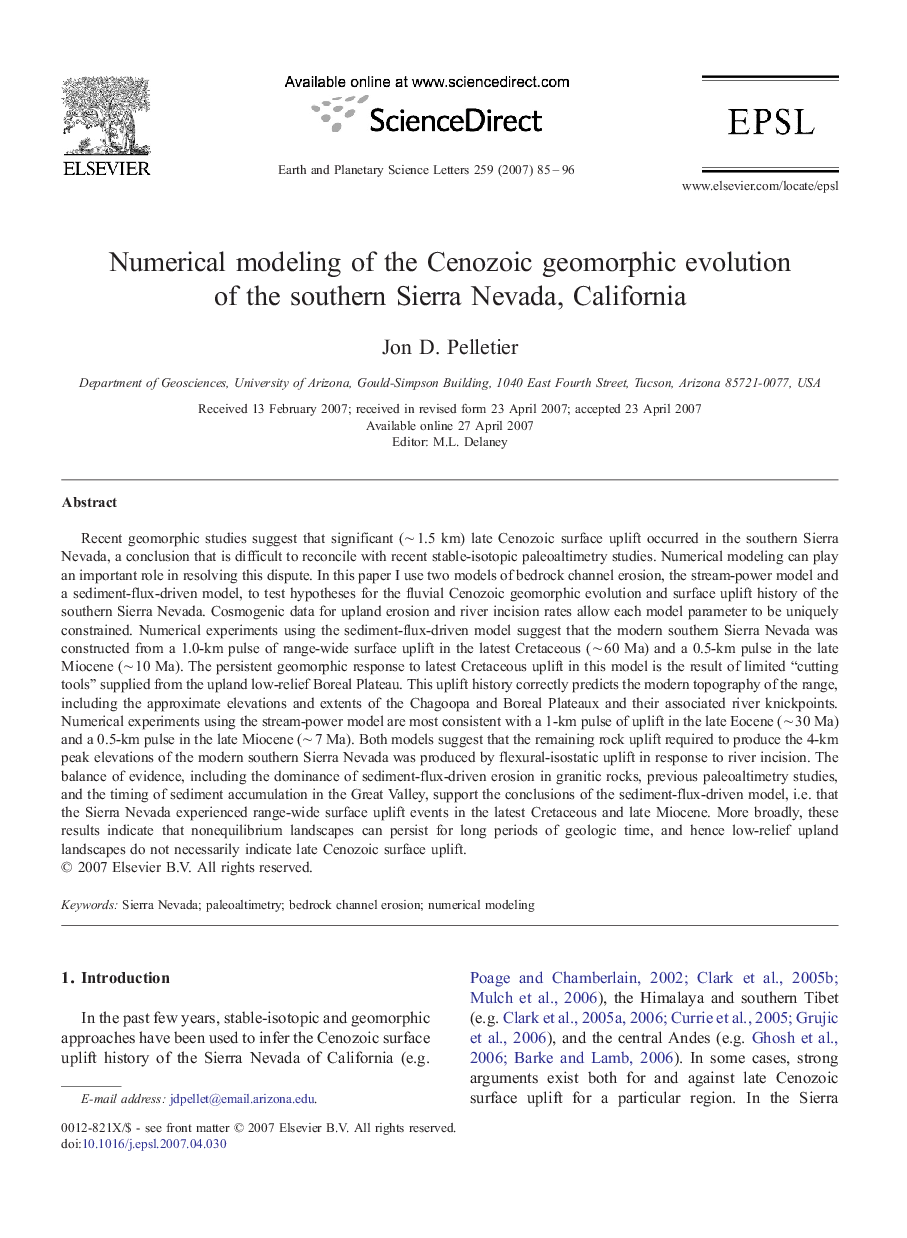| کد مقاله | کد نشریه | سال انتشار | مقاله انگلیسی | نسخه تمام متن |
|---|---|---|---|---|
| 4680283 | 1634917 | 2007 | 12 صفحه PDF | دانلود رایگان |

Recent geomorphic studies suggest that significant (∼ 1.5 km) late Cenozoic surface uplift occurred in the southern Sierra Nevada, a conclusion that is difficult to reconcile with recent stable-isotopic paleoaltimetry studies. Numerical modeling can play an important role in resolving this dispute. In this paper I use two models of bedrock channel erosion, the stream-power model and a sediment-flux-driven model, to test hypotheses for the fluvial Cenozoic geomorphic evolution and surface uplift history of the southern Sierra Nevada. Cosmogenic data for upland erosion and river incision rates allow each model parameter to be uniquely constrained. Numerical experiments using the sediment-flux-driven model suggest that the modern southern Sierra Nevada was constructed from a 1.0-km pulse of range-wide surface uplift in the latest Cretaceous (∼ 60 Ma) and a 0.5-km pulse in the late Miocene (∼ 10 Ma). The persistent geomorphic response to latest Cretaceous uplift in this model is the result of limited “cutting tools” supplied from the upland low-relief Boreal Plateau. This uplift history correctly predicts the modern topography of the range, including the approximate elevations and extents of the Chagoopa and Boreal Plateaux and their associated river knickpoints. Numerical experiments using the stream-power model are most consistent with a 1-km pulse of uplift in the late Eocene (∼ 30 Ma) and a 0.5-km pulse in the late Miocene (∼ 7 Ma). Both models suggest that the remaining rock uplift required to produce the 4-km peak elevations of the modern southern Sierra Nevada was produced by flexural-isostatic uplift in response to river incision. The balance of evidence, including the dominance of sediment-flux-driven erosion in granitic rocks, previous paleoaltimetry studies, and the timing of sediment accumulation in the Great Valley, support the conclusions of the sediment-flux-driven model, i.e. that the Sierra Nevada experienced range-wide surface uplift events in the latest Cretaceous and late Miocene. More broadly, these results indicate that nonequilibrium landscapes can persist for long periods of geologic time, and hence low-relief upland landscapes do not necessarily indicate late Cenozoic surface uplift.
Journal: Earth and Planetary Science Letters - Volume 259, Issues 1–2, 15 July 2007, Pages 85–96